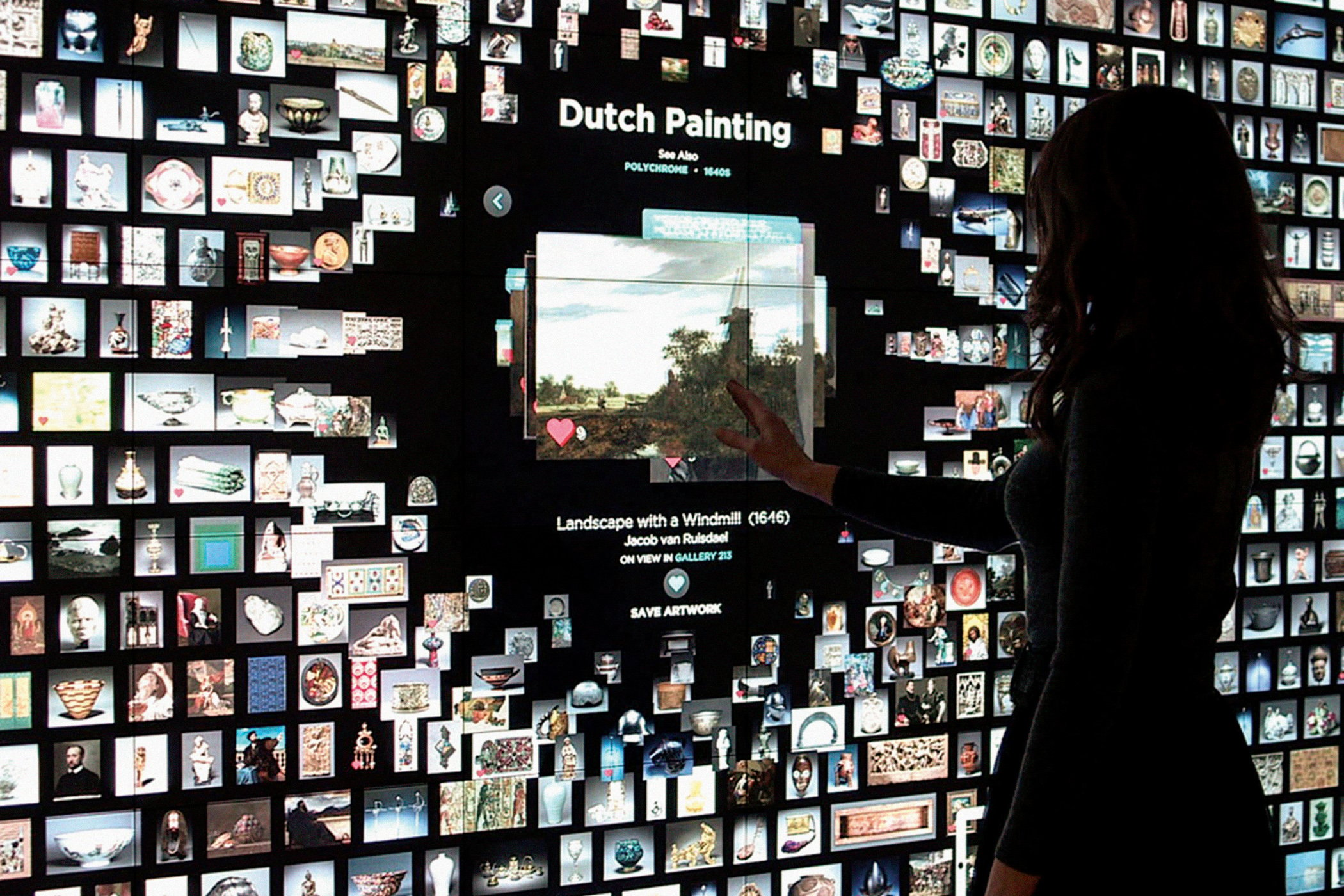
In the ongoing quest to stay relevant in a world dominated by digital natives, just about every major museum has rolled out some form of interactive technology within its program. We’ve seen numerous apps, playful touchscreens, and VR-aided exhibitions. Some museums are even replacing their docents with robots. One, Florida’s Salvador Dali Museum, brought its namesake back to life using AI.
The Cleveland Museum of Art’s initiative, an interactive three-room experience (and app) called the ARTLENS Gallery, is one of the more comprehensive projects in the museum-tech sphere. It offers the opportunity for visitors to virtually explore artworks up close, create their own digital compositions, and learn about the museum’s collection by taking pictures with their phones.
But is ARTLENS actually successful in increasing audience engagement, or is it just a gimmick? The museum was curious to find out.
Last week, the CMA released the findings of a two-year study looking into whether or not digital technology increases visitor engagement. “We felt there was a real gap in the knowledge across the museum evaluation field,” Hannah Ridenour, the research manager who led the study, tells artnet News. “We wanted to look past what we would consider a traditional evaluation of an exhibition—beyond, for example, immediate visitor takeaways or the length of time people spend with certain exhibitions. We wanted to look broader and examine how an effort like the ARTLENS gallery can impact both a visitor’s experience across the entire museum trip as well as their lifelong relationship to art.”
A young CMA visitor in the ARTLENS Studio. Courtesy of the Cleveland Museum of Art. Photo: Scott Shaw Photography.
Among other insights, the research and evaluation team learned that roughly 36 percent of museum visitors experienced the ARTLENS Gallery during their trip. Of this group, 76 percent thought that the gallery enhanced their overall museum experience, while 74 percent said it encouraged them to looker closer at the art on the walls. Seventy-three percent claimed the gallery made them more interested in the museum’s permanent collection, while 78 percent said it made the museum seem more approachable.
Visitor data for the study was collected from November 2017 to January 2018. Researchers randomly approached museum guests, asking them to take pre- and post-visit surveys. The surveyors were careful not to encourage these participants to experience the museum in any specific way. In all, 438 paired surveys were collected in total.
Tellingly, those participants who visited the digital gallery felt less confident about their museum knowledge than those who didn’t. But when surveyed after, both groups expressed the same amount of confidence about their understanding of the museum’s art—suggesting that those who experienced the ARTLENS gallery were both more inclined to learn and did indeed learn more.
A CMA visitor in the ARTLENS Gallery. Courtesy of the Cleveland Museum of Art. Photo: Scott Shaw Photography.
Perhaps the most interesting figure had to do with millennials, an elusive demographic whose attention—and money—has long been coveted by institutions.
Millennials were 15 percent more likely to visit the digital galleries than older adults (44 percent compared to 29 percent, respectively) and 88 percent said that the digital component of their visits made them appreciate the value of an art museum.
“We’re not competing with other museums. We’re competing with Netflix,” says Jane Alexander, the museum’s chief digital officer. “You can be six years or 80 years old, you can have an art history degree or not—we want people to realize there’s something here for everyone.”
“Our goal is to give people the tools to be able to go to any museum in the world and feel comfortable and empowered,” adds Ridenour.
Working off their findings, the Cleveland museum has also created a free, downloadable form for other institutions to measure the efficacy of their own digital programs. What impact “The Art Museum Digital Impact Evaluation Toolkit” will have on the wider field remains to be seen, but for now the museum seems to have confirmed to itself at least that its digital initiatives have been worth the investment.